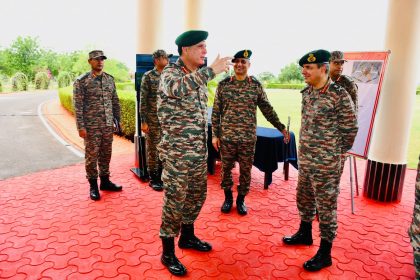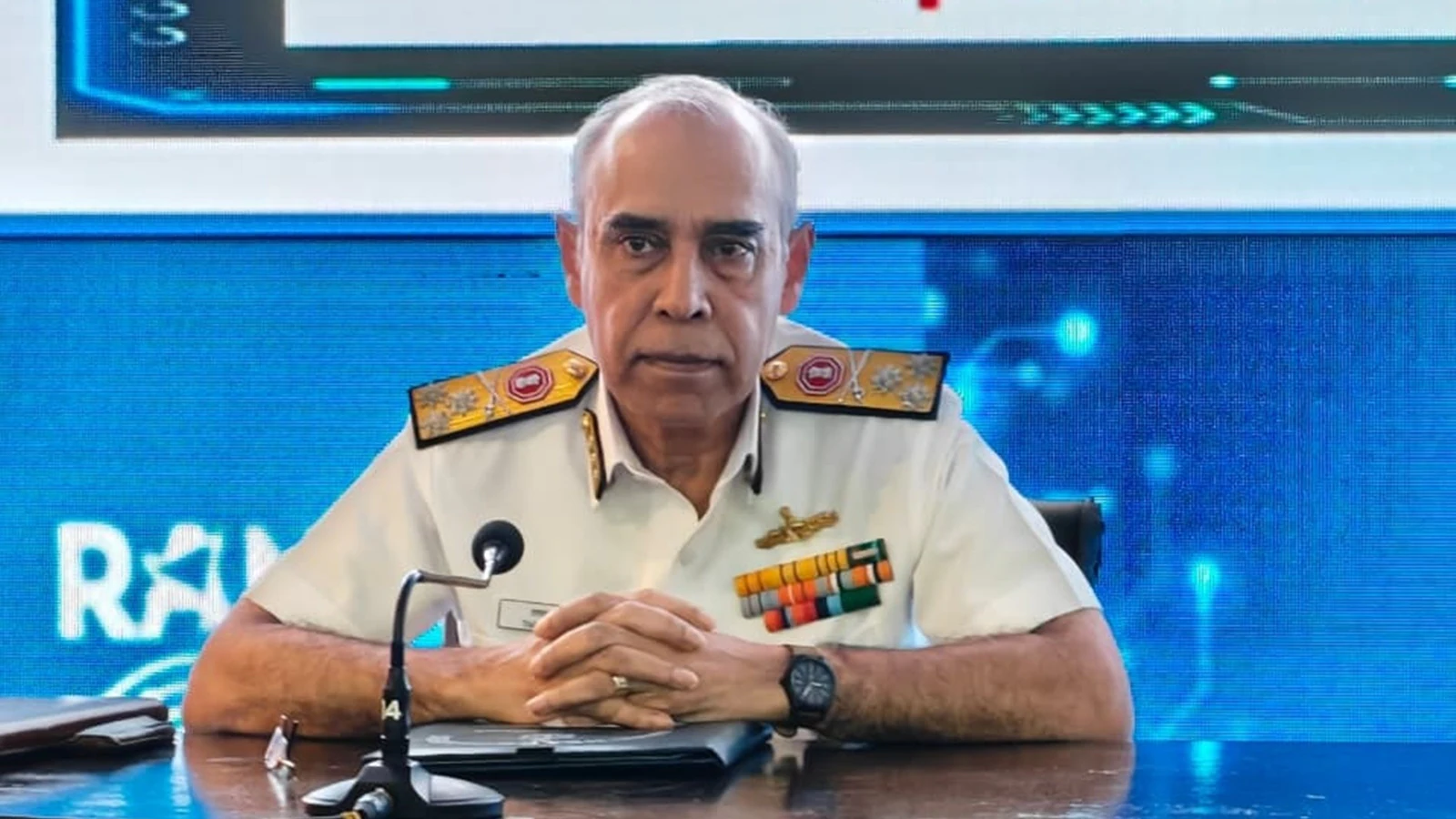“Gone Are The Days…”: Lt Gen Pratik Sharma On Changing Face Of Terror Operations
Lt Gen Sharma says terrorists now operate from caves, hills, and forests, making counter-terror missions longer and more complex.
IIT-H, Indian Army Launch ‘VIGRAHA’ Centre for Defence Technology Innovation
New Centre of Excellence to Pioneer AR/VR, AI, Robotics, and Drone Technologies for Indian Army’s Future Warfare Needs.
Punjab Floods: Army Rescues Mother and 15-Day-Old Baby Amid Widespread Evacuations
Kharga Corps, Vajra Corps, and BSF Lead Massive Rescue Efforts as Troops, Boats, and Helicopters Save Lives in Flood-Hit Punjab…
Indian Army Pushes Tech Integration in Jaisalmer Review
Southern Command Chief Highlights Drone Use, Self-Reliance & Modernization Drive.
15 MiG-29K Fighters on INS Vikrant Were Ready to Strike Pakistani Navy: Vice Admiral Sobti
Operation Sindoor showcased India’s naval power as INS Vikrant spearheaded a rapid deployment that bottled up Pakistan’s fleet.
No Private Sector Consortium Shows Interest in AMCA Fighter Jet Project, Deadline Extended
ADA extends submission timeline to September 30 after no bids received for India’s fifth-generation stealth fighter programme.






